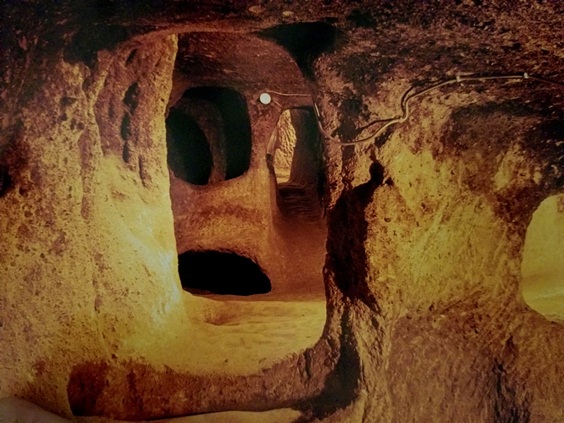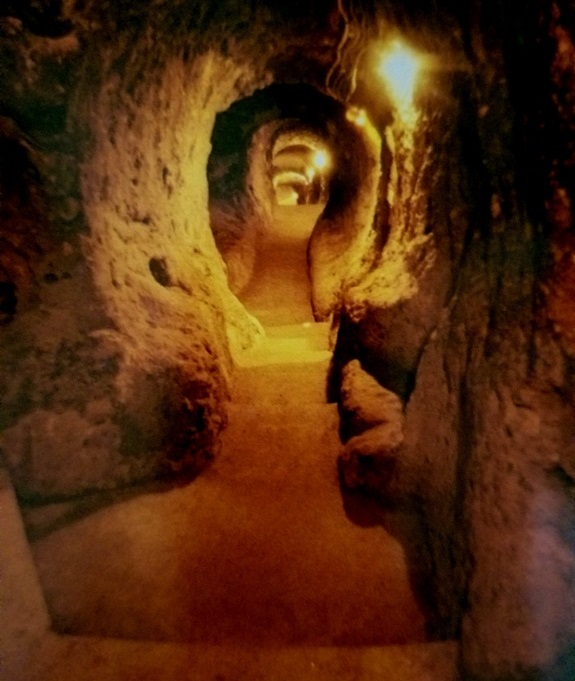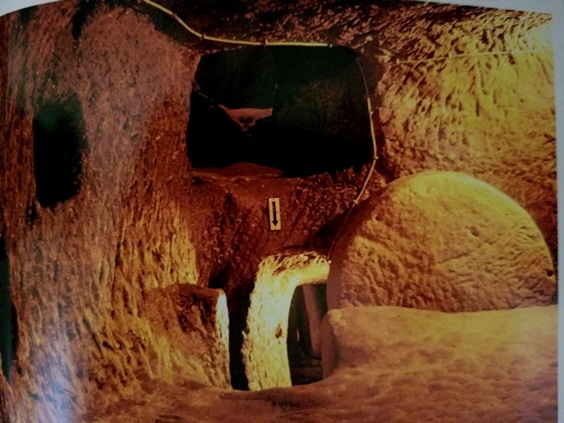Top 10
Top Ten Man-made Wonders of the world
- Petra – Jordan : When I first visited Petra, it was a relatively new tourist destination, and I had only a vague idea of what to expect. We set out at daybreak as the sun began to crest the horizon. The pathway into Petra leads one through a corridor of soaring rock-pillars, which have been created and polished by nature’s sculptors: Wind and Water.
The formations are so high and so close together that the temperature drops and there is barely enough light to illuminate the narrow pathway. Suddenly, a slim sheath of gold appears between the jagged fissure of stone, and one can vaguely make out some rock carvings. Stepping into the light one stops dead in one’s tracks, overwhelmed by the grandeur and beauty of the Khasneh (the Treasury), bathed in gold. In the ancient Nabatean city of Petra, man worked in perfect harmony with nature to carve a city of colossal structures that enhance the natural formations and elevate their beauty to an almost spiritual level. I recommend spending at least two days and a night in Petra. Plan to arrive at the gates when they open, then visit again in the late afternoon and stay until the gates close.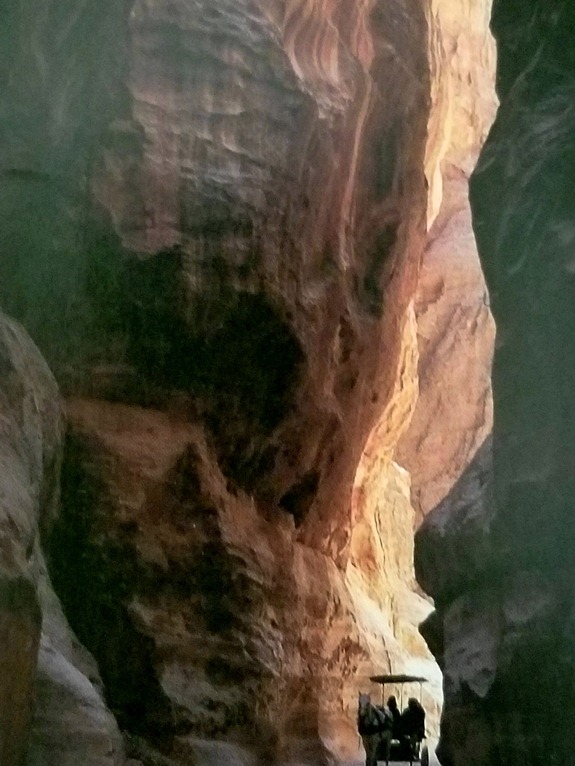
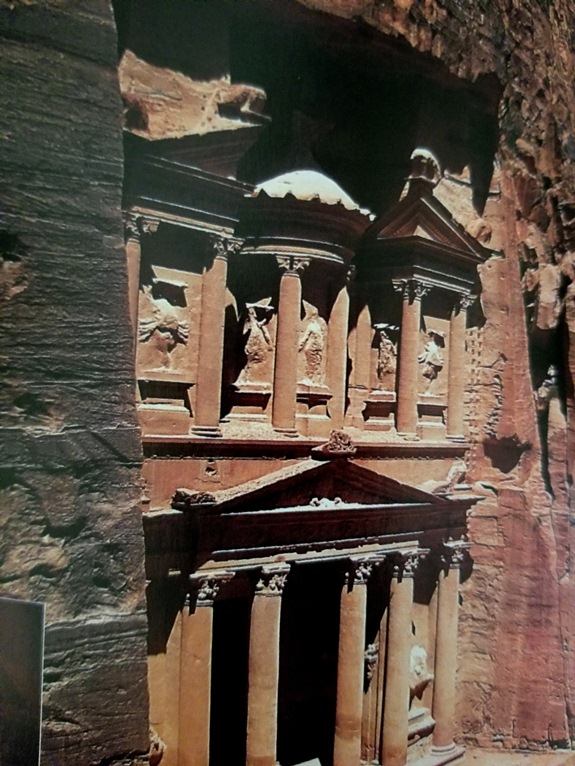
- The Great Wall of China – Jinshalang : The Jinshalang section of the Great Wall (dotted with 67 Watch towers and 2 Beacon towers along its 10.5 kilometer length), has been respectfully restored. It was autumn when we visited, and the mountainside was covered in yellow, red, and copper-colored foliage. The greatest advantage of hiking this section of the wall is that it’s a two hour drive from Beijing making it less likely to be obscured by smog and overrun by visitors. Visit on a weekday and get an early start, by departing Beijing at 6:30 a.m. You’ll be rewarded with having the trail virtually to yourself. No photos can convey the sense of awe that holds one spellbound when looking out from one of the watch towers at the sweeping view of the wall snaking across the mountain tops, all the way to the horizon. The enormity of the undertaking; the number of years; and the manpower that it took to build the Great Wall, are mindboggling.
*Note: This is not an easy hike. It can be extremely steep and slippery in parts, so I recommend wearing shoes that have a sturdy sole and carrying a hiking pole if possible.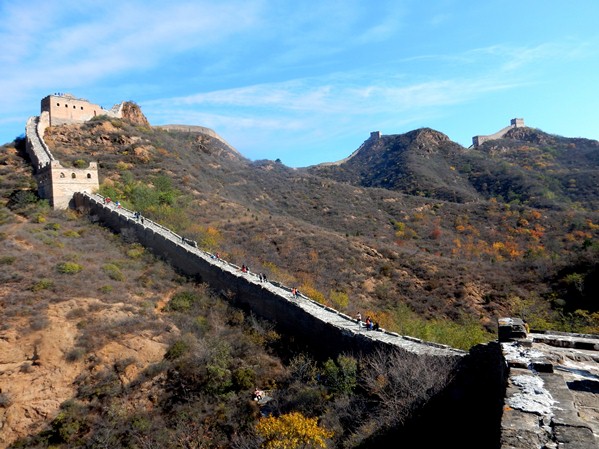
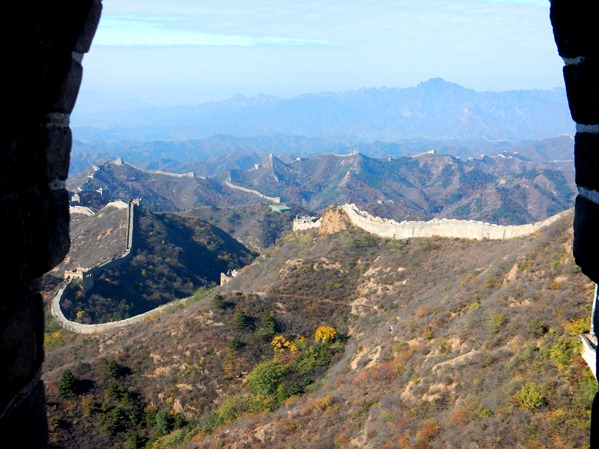
- The City of Angkor – Cambodia :While Angkor Wat is the largest and most commonly known temple, the City of Angkor once covered an area of 390 square miles (1,000 square kilometers) and boasted more than 100 temples. The temples were built by the kings of Angkor – who were considered god-kings by the Khmer people. After the temples were abandoned by their royal patrons in the 15th Century, some of them like Ta Prohm, Ta Son, and Preah Khan, were covered by the jungles and lay buried for hundreds of years, while others were used as places of worship up until the 17th Century. Those covered and preserved by the jungle have been artfully restored by archeologists who have respected the intertwining of nature with the ancient architecture, which makes the temples so uniquely seductive. Angkor Wat is spectacular in scale and architectural design, while Angkor Thom – ‘The Great City’ – and last Khmer capital – is thought to have been populated by close to a million people. The entire city of Angkor is magnetic. We planned a three day visit, which turned into a six day visit.
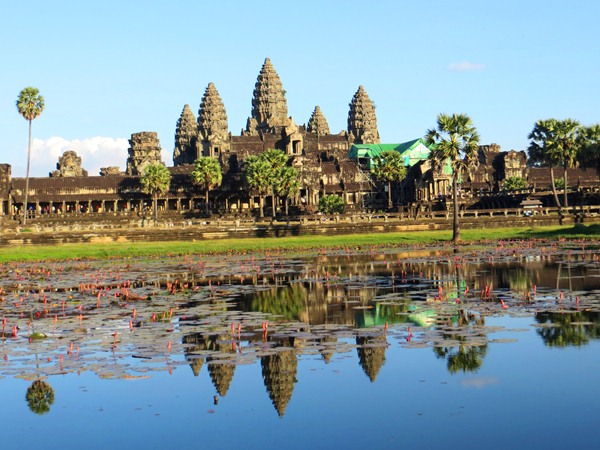
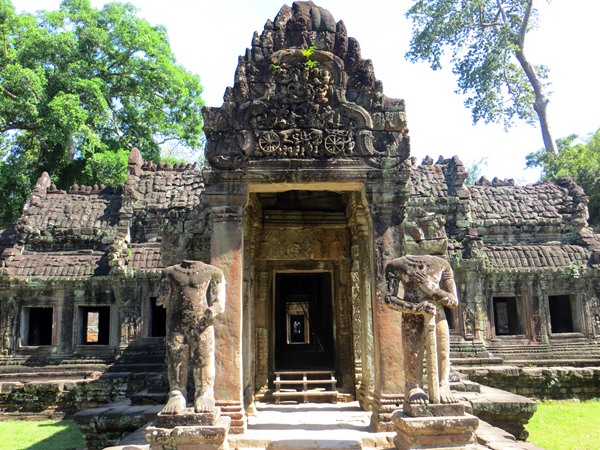
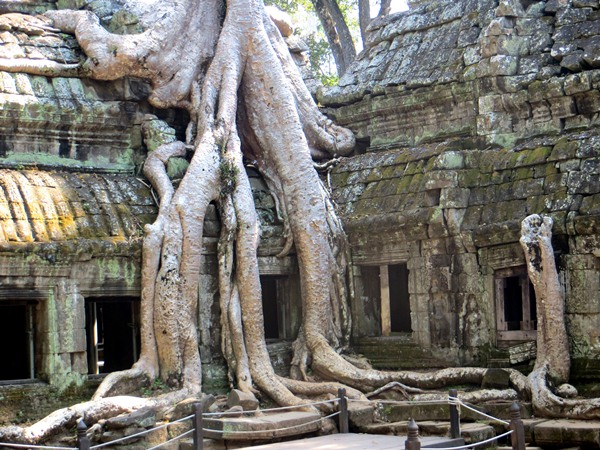
- La Sagrada Familia – Barcelona – Spain :La Sagrada Familia – the world’s oldest architectural masterpiece still under construction – is a Roman Catholic Church attributed to the famous architect Antoni Gaudi. To date, seven architects have worked on La Sagrada Familia since it was designed by architect Francisco de Paula del Villar in 1882. Construction cranes and scaffolding have become an integral part of the decor. This whimsical Gothic – Art Nouveau church is defined by its unique spires that reach for the sky, symbolizing elevation towards God. Each spire is dedicated to an important figure in the New Testament, and to date, only a half of the spires have been completed. Estimated date of completion is somewhere around 2026 though as Gaudi was fond of saying: “My client is not in a hurry.”
*While in Barcelona don’t miss Gaudi’s other masterpieces: Park Guell, Casa Batllo, Casa Calvet, Casa Vicens, Casa Milā (La Pedrera).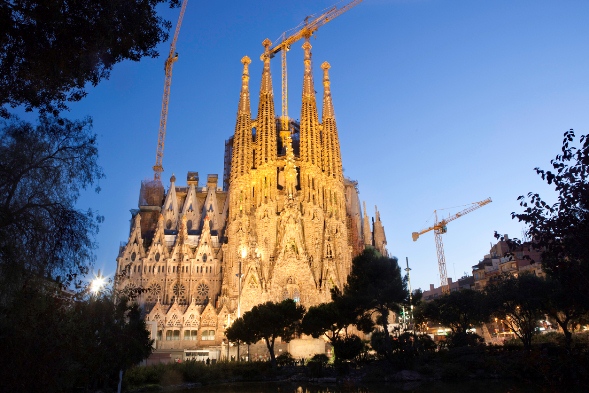
- The Venice Canals – Italy: How can any city compete with the poetic beauty, and the vibe of Italy’s Venice? I first set eyes on this city at age nine, and it was love at first sight. A living, breathing, fairytale fantasy with bridges, vaporettos that ply the canals, bustling cobblestone walkways, and gondolas rowed by handsome, singing gondoliers. The textures and hues of the walls of the grand Palazzos transition to shades of amber, pink, rose, and blue depending on the light and time of day. A floating city whose history dates back to 400AD., Venice is Old World elegance, it is at once traditional and trendy, tranquil and vibrant. If there is a must see city that is a romantic man- made wonder of the world, Venice gets my vote.
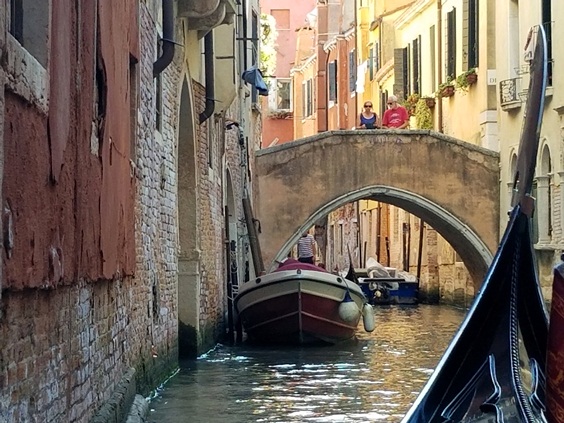
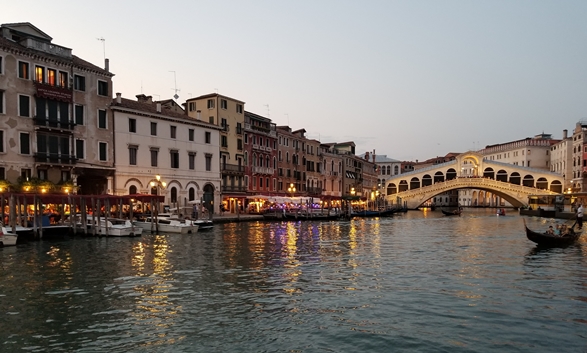
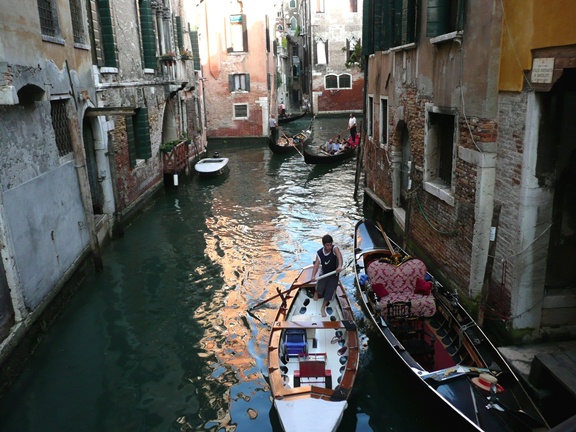
- The Terra Cotta Warriors – Xian – China : In 1974, in the countryside an hour’s drive from Xi’an, a farmer was digging a well when he struck a piece of hard clay. What he unearthed was the hand-painted head of a terra cotta warrior. Unbeknown to him, he had discovered the exact spot where an army of terra cotta warriors stood buried for almost two thousand years.
In 206 B.C., Emperor Qin set about building his mausoleum which was to become the size of an immense underground city. A kilometer away from his mausoleum, he ordered an army of 8,000 larger than life Terra Cotta Warriors to be made then buried standing in perfect formation. No two are alike. The ethnic diversity of the members of Qin’s army can be seen in the facial features and headdresses. The figures were all hand-painted in bright colors, which have unfortunately faded since they were unearthed and exposed to light. While archaeologists believe that they have discovered the entire site, only a thousand warriors, horses, and carriages have been restored to date. The sight of the terra cotta army standing in perfect formation as far as the eye can see renders one speechless.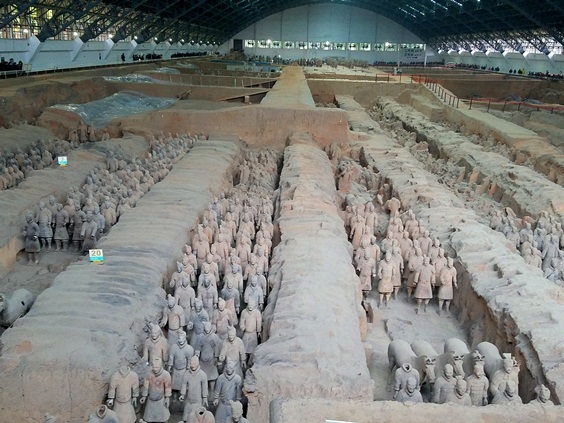
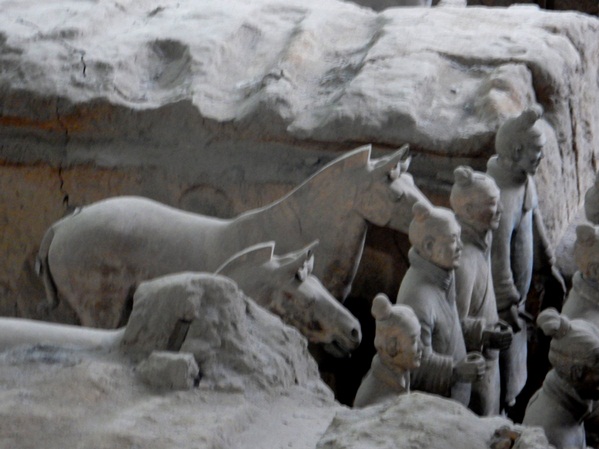
- Machu Picchu – Peru : A four day trek along the Inca trail climbing and descending walls of narrow, moss covered, Inca steps – is exhausting, exhilarating, and unforgettable. I would look up at the majestic Apus (the Andes Mountains) revered by the Inca and wonder if they could talk, what stories would they tell of those who had walked the trail over the centuries? Each day we would come upon impressive ruins: Runcu Raccay, a watch tower, and rest stop; Phuyupatamarca (the place of the clouds) where ritual baths were built for use in religious ceremonies; Winay Wayna, an upper and lower housing complex connected by stone stairways and circular agricultural terraces. By midmorning on the fourth day, we scaled the last wall of steps, and there it was, ‘The Lost City of The Inca,’ Machu Picchu, wrapped in silence and watched over by the sentinel peak of Huayna Picchu. I stood transfixed and could not control my tears.
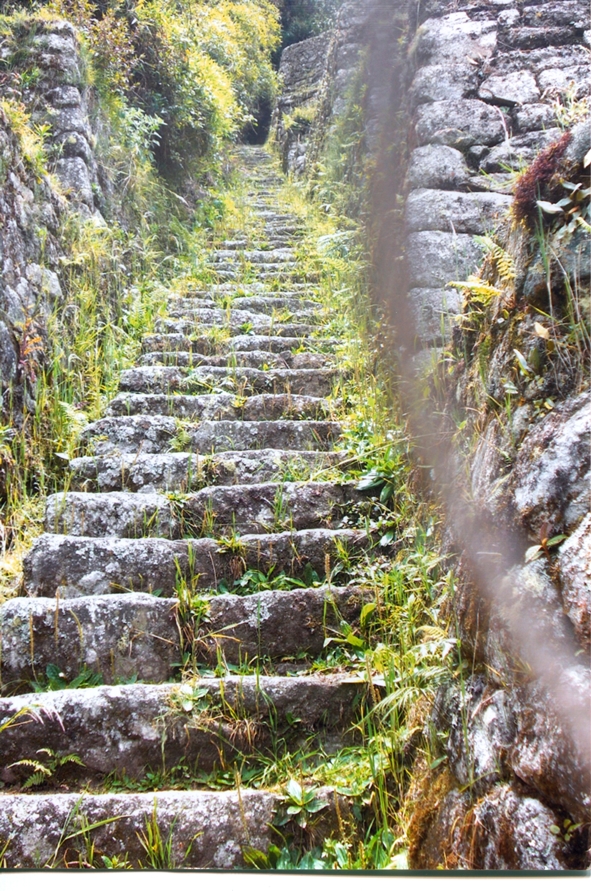
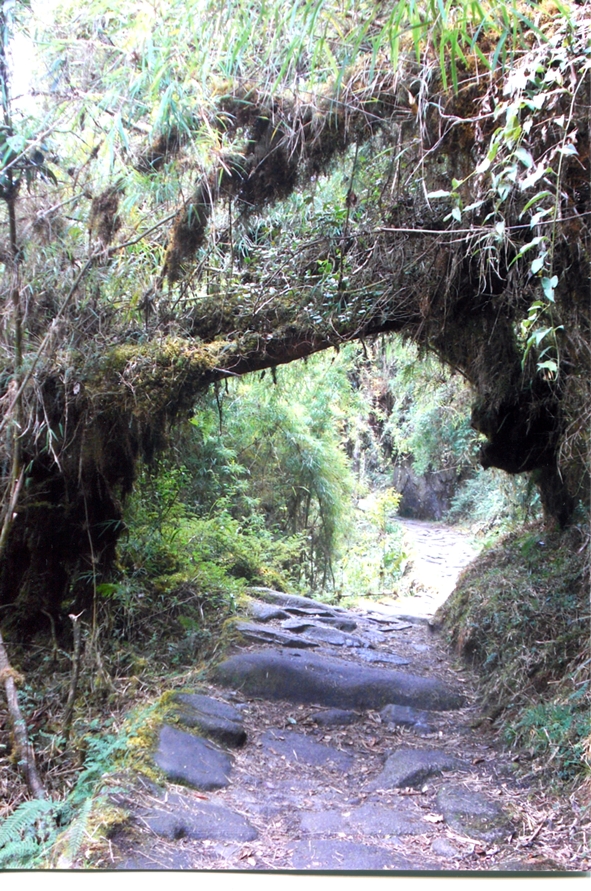
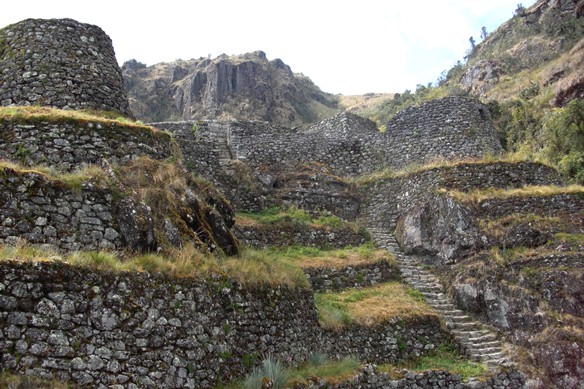
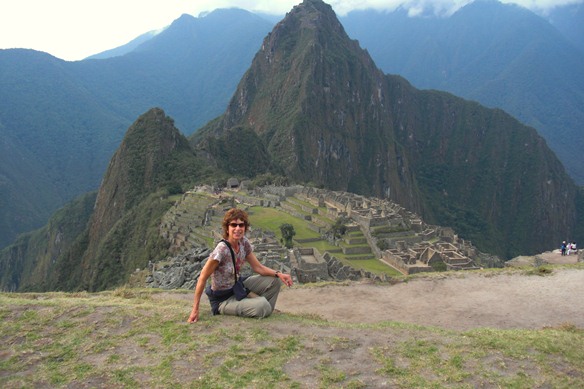
- The Burj Khalifa – Dubai : The Burj Khalifa at 2,722 feet (828 meters) in height is the world’s tallest building and free standing structure. It’s a spectacular sculptural piece of architecture that dwarfs the collection of skyscrapers (each one an architectural masterpiece) that define Dubai. Built from glass, steel, aluminum, and reinforced concrete, it shimmers silver and gold in the bright desert light reaching for the sky like a rocket impatient to take off into space. The Burj Khalifa is an office, hotel, and apartment building. It has two observation decks, one on the 124th floor and the other on the 148th floor. The restaurant and bar afford one a spectacular panoramic view from the 122nd floor. Distributing water throughout the building is an engineering and scientific feat, as is the cooling system. As for window cleaning, it takes approximately three months to clean the windows from top to bottom. The Burj Khalifa – stands out as a modern man-made wonder of the world.
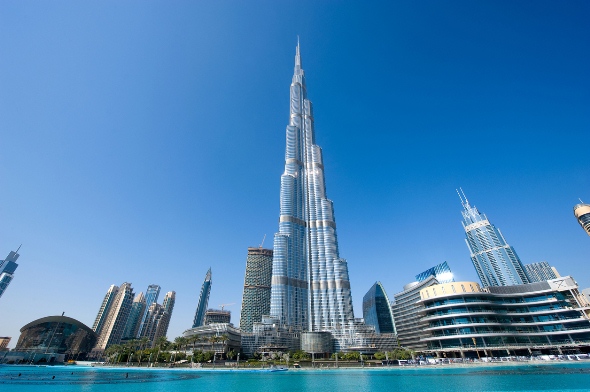
- Ajanta and Ellora Caves – India : One hundred and one kilometers from the city of Auranjabad, in Maharashtra State, the Ajanta caves nestle into the Indhadree Hills. These are no ordinary caves! They are enormous monolithic temples and monasteries chiseled by hand into the mountainside. There are no roof supports. All the monumental columns are purely ornamental in nature.
Buddhist monks in search of a retreat from the world were attracted to the valley of Ajanta by its serenity and seclusion. The caves appear to have been carved in two phases: the earliest in 300 B.C. and the second group from approximately 400 – 600 A. D. The symmetry and scope of the cave interiors is unimaginable. How did they do it? No column or sculpture or part was made elsewhere and brought to the caves. Everything was carved out of the mountain using rudimentary tools. The walls are adorned from top to bottom in brightly colored rich paintings that depict scenes from the life of the founding Buddha, the Jataka Tales, mythology, and everyday life. Ajanta was abandoned in the 8th Century when Buddhism declined. The jungle covered and preserved it until it was discovered in 1819 by a British army officer during a tiger hunting expedition.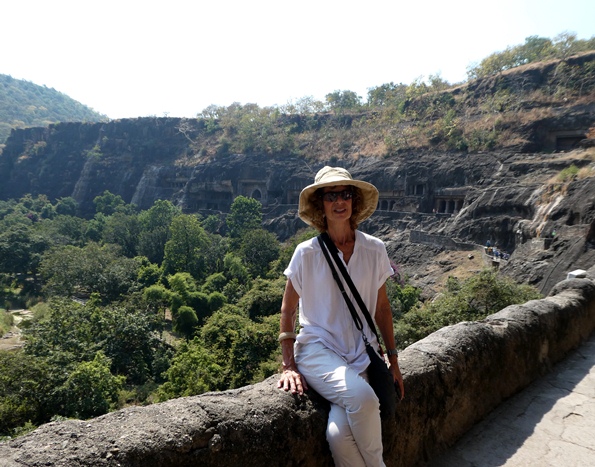
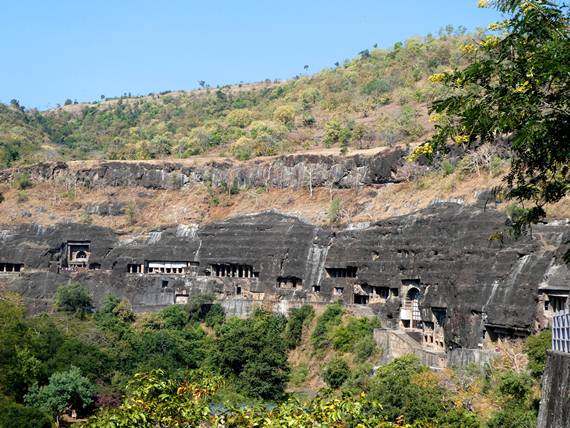

Ellora
With the decline of Buddhism in Ajanta, the ancient trade route that had passed through the mountains of Ajanta was replaced by one that passed by Ellora.
In Ellora – 34 cave temples and monasteries were carved below the rim of a cliff. Here the temples are Buddhist, Hindu, and Jain. All are monolithic, and as in Ajanta, they are cathedral-like in size and grandeur. While the wall paintings are not as well preserved as those in Ajanta, the symmetry, sculpture, columns, and ribbed cathedral ceilings, are remarkable. The absolute highlight of Ellora is the Kailasa Temple complex. It is estimated that over 400,000 tons of rock was chiseled out from the top down to create this spectacular monument. Neither photos, words, nor videos can do it justice. One has to stand there dwarfed by the structures to appreciate this stupendous man-made wonder.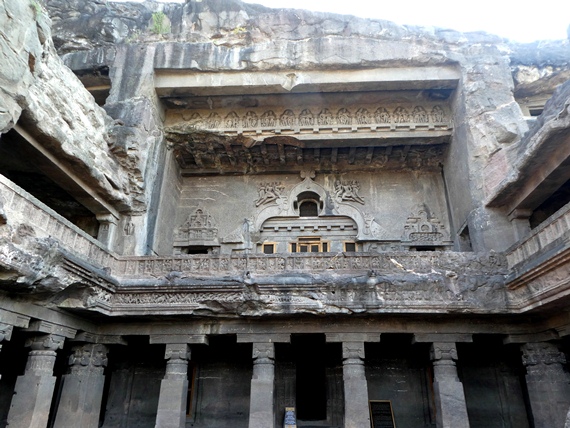
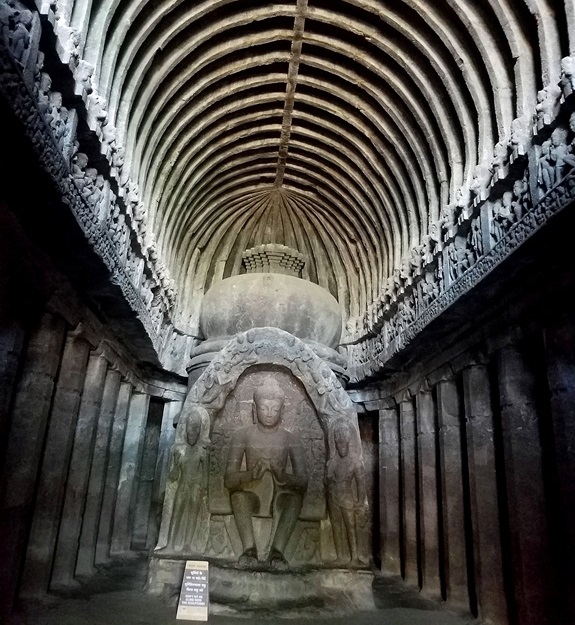
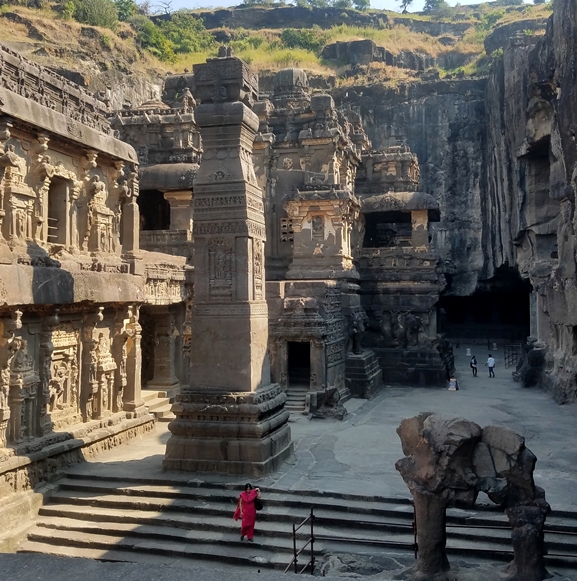
- The Underground Cities of Cappadocia – Turkey : Hidden beneath the villages and towns of Cappadocia are entire cities, which on a map, resemble a child’s ‘Snakes and Ladders’ board. They reach deep underground some consisting of as many as fifteen to twenty levels. It is thought that Christians built them as a place where they could gather and worship free from persecution, and later – in the 6th and 7th Centuries – they were used as a safe haven during Arab attacks. Evidence of churches and pools for baptism lead historians to conclude that they were occupied at some time by Romans and Byzantines. Wine was made underground; animals were housed; there were bedrooms, wine cellars, air shafts, several kitchens and immense, protective, millstone doors, weighing several tons, which were used to block the path of invaders and could only be opened from the inside. Historians and archeologists surmise that those who inhabited the underground cities did not live there permanently. It is believed that they were farmers and artisans who retreated underground only when threatened. Because so much is still unknown regarding these cities and there are so many levels yet to be excavated, they remain one of the most mysterious and fascinating man-made wonders of the world.
